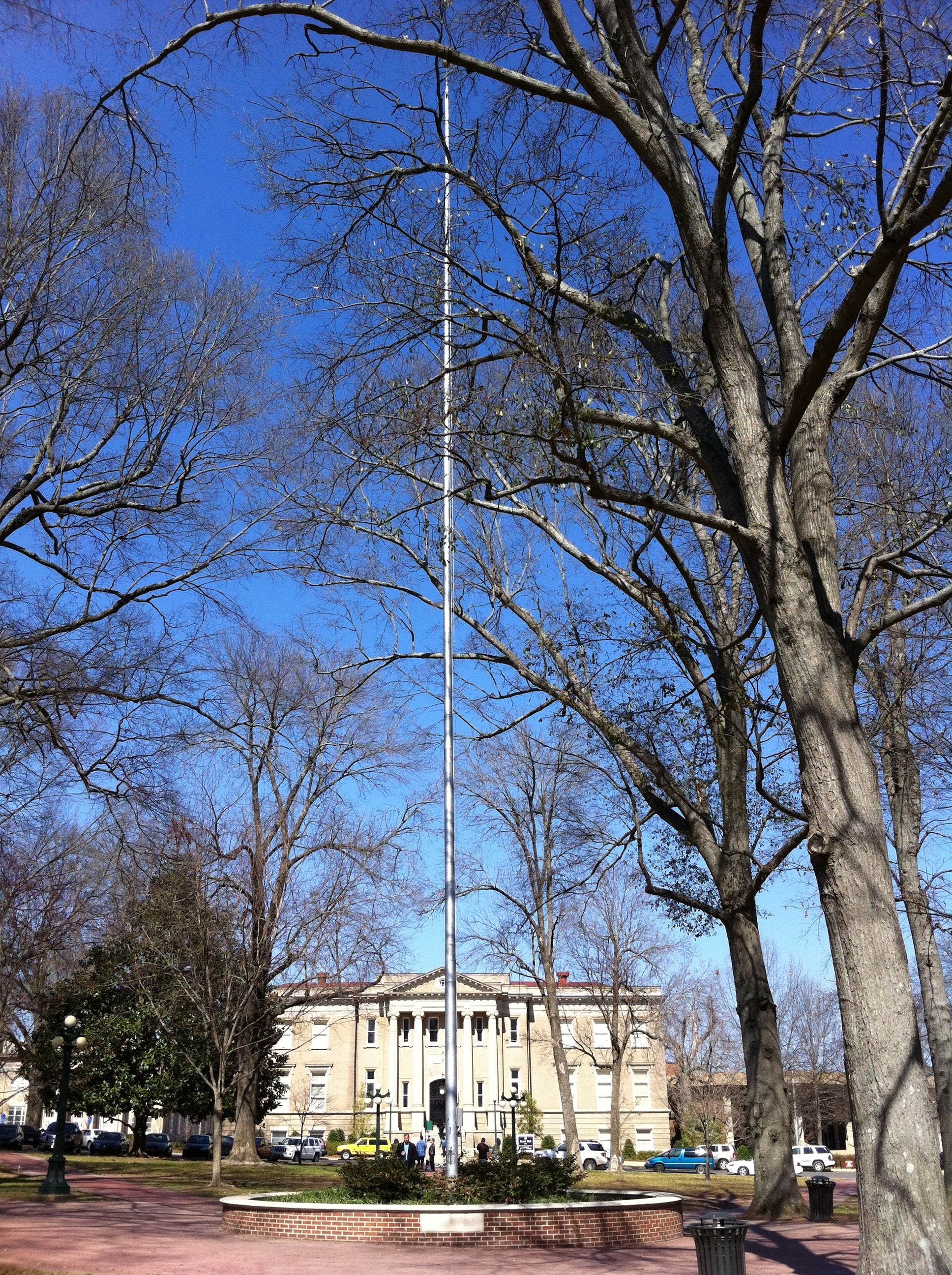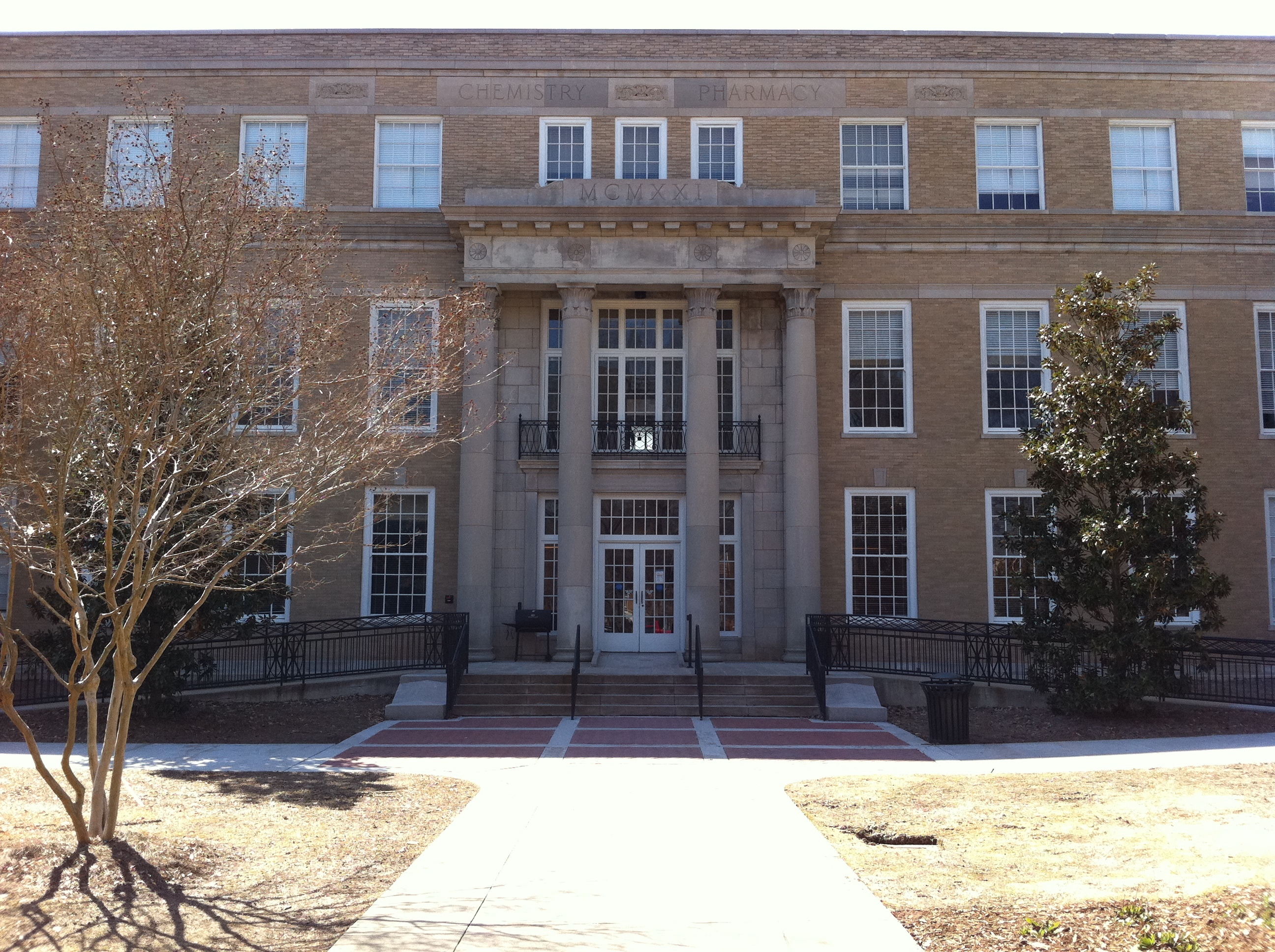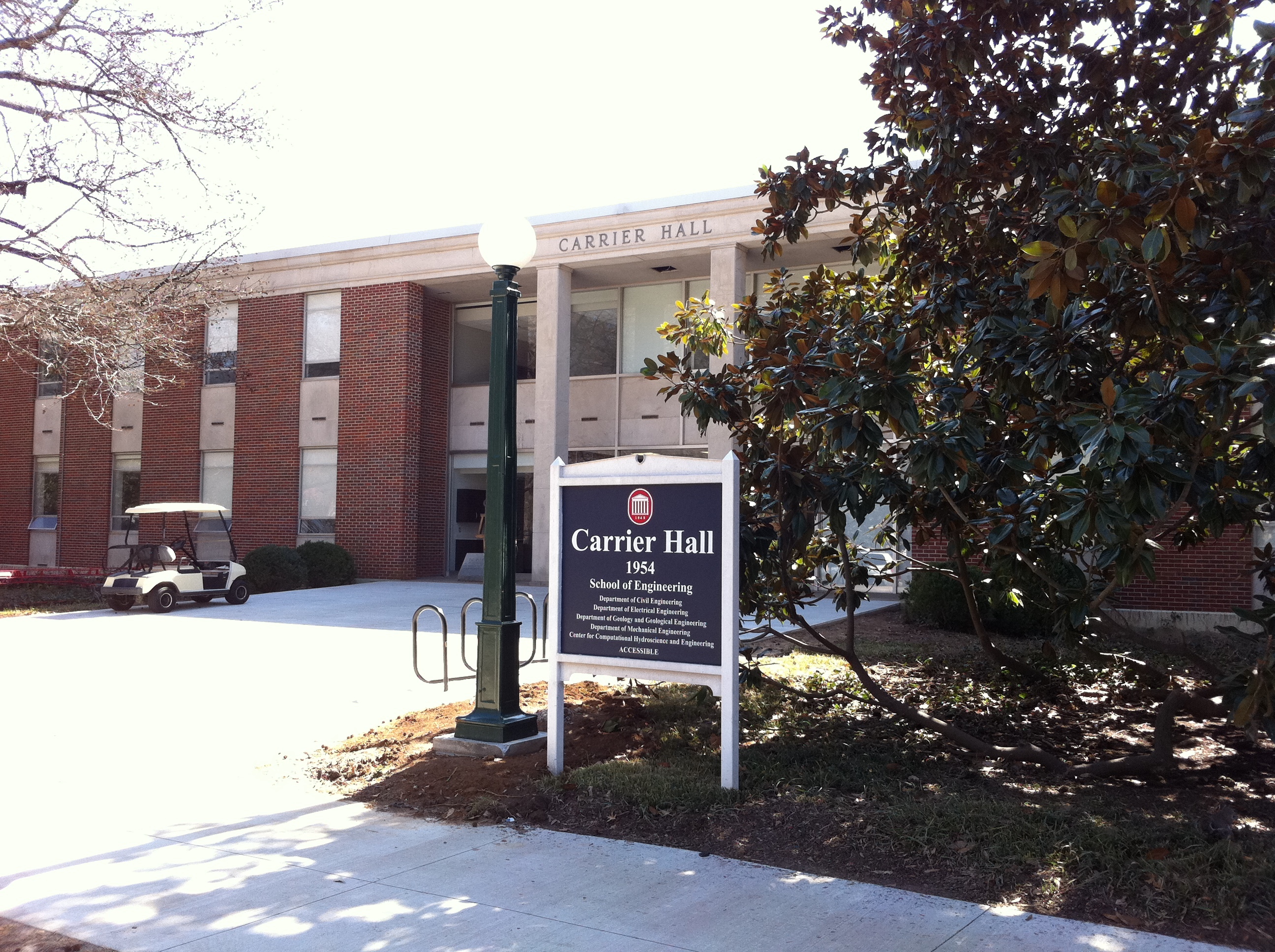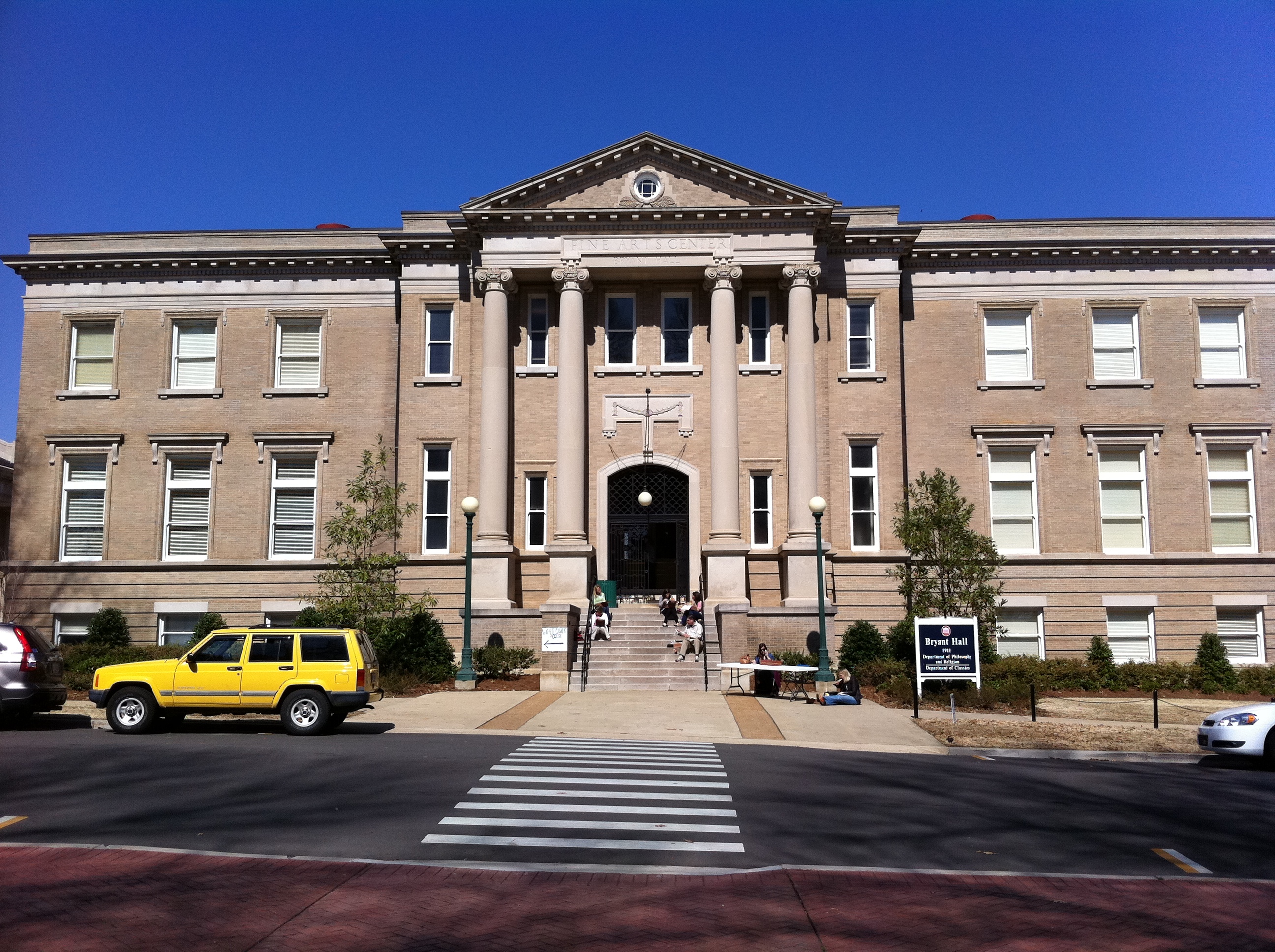Lyceum–The Circle Historic District on:
[Wikipedia]
[Google]
[Amazon]
The Lyceum–The Circle Historic District is a historic district within the
 In the university's early days, the Lyceum Building was the only academic structure, housing a lecture hall, several classrooms, the faculty offices, a geological museum, and the library. The Lyceum is now used for the university's administration offices. Its columned facade is represented on the official crest of the university, along with the date of establishment. Built in 1848 to the designs of architect William Nichols, the building is the oldest on campus and concurrent with its founding.
In the university's early days, the Lyceum Building was the only academic structure, housing a lecture hall, several classrooms, the faculty offices, a geological museum, and the library. The Lyceum is now used for the university's administration offices. Its columned facade is represented on the official crest of the university, along with the date of establishment. Built in 1848 to the designs of architect William Nichols, the building is the oldest on campus and concurrent with its founding.
 The flagpole has stood in the center of The Circle since 1962. Its brick base was constructed in 2000. During the famous desegregation riots, a former Ole Miss football player climbed the pole in an effort to attract rioters' attention and convince them to go home.
The flagpole has stood in the center of The Circle since 1962. Its brick base was constructed in 2000. During the famous desegregation riots, a former Ole Miss football player climbed the pole in an effort to attract rioters' attention and convince them to go home.
 A contextual plaque now stands in the same position where the Confederate Monument stood from 1906 until it was moved on July 14, 2020. The Confederate Monument was moved to the site of a Civil War cemetery in a secluded area of campus.
The Confederate Monument contains a sub-column fashioned in the likeness of a castle, inscribed with the following: "To Our Confederate Dead, 1861-1865,
A contextual plaque now stands in the same position where the Confederate Monument stood from 1906 until it was moved on July 14, 2020. The Confederate Monument was moved to the site of a Civil War cemetery in a secluded area of campus.
The Confederate Monument contains a sub-column fashioned in the likeness of a castle, inscribed with the following: "To Our Confederate Dead, 1861-1865,
 The Old Chemistry Building, now designated as Brevard Hall, was built in 1923. During the desegregation riots on September 30, 1962, students broke into the building and threw
The Old Chemistry Building, now designated as Brevard Hall, was built in 1923. During the desegregation riots on September 30, 1962, students broke into the building and threw
 Carrier Hall was one of several buildings which students plundered for riot material in 1962. Branching off from the two-story main section is a rear section connected by two covered passageways. This section also contains two stories and is slightly inset and setback from the main section.
Carrier Hall was one of several buildings which students plundered for riot material in 1962. Branching off from the two-story main section is a rear section connected by two covered passageways. This section also contains two stories and is slightly inset and setback from the main section.
 During the 1962 riots, four-story Shoemaker Hall was under construction. Students took up construction materials, including loose bricks, metal conduit pipes, and a bulldozer to attack federal officers. The dorm hall was the site of one of the two fatalities associated with the riots. Each of the men killed was shot execution style.
During the 1962 riots, four-story Shoemaker Hall was under construction. Students took up construction materials, including loose bricks, metal conduit pipes, and a bulldozer to attack federal officers. The dorm hall was the site of one of the two fatalities associated with the riots. Each of the men killed was shot execution style.
 Two-story Ventress Hall, built in 1889, appears in a famous photo of James Meredith walking in the commencement procession on August 18, 1963.
Two-story Ventress Hall, built in 1889, appears in a famous photo of James Meredith walking in the commencement procession on August 18, 1963.
 The Croft Institute for International Studies, known as the "Y" Building at the time of desegregation and earlier as the Old Chapel, in 1962 harbored many people escaping the tear gas and the general melee. Others crowded into the Y to watch
The Croft Institute for International Studies, known as the "Y" Building at the time of desegregation and earlier as the Old Chapel, in 1962 harbored many people escaping the tear gas and the general melee. Others crowded into the Y to watch
 After housing the university's library from 1911 to 1952, Bryant Hall has been home to the Fine Arts Center and the departments of Philosophy, Religion, and Classics. During the riots, much of the pitched battle was fought in front of the hall.
After housing the university's library from 1911 to 1952, Bryant Hall has been home to the Fine Arts Center and the departments of Philosophy, Religion, and Classics. During the riots, much of the pitched battle was fought in front of the hall.
 During the riot, Peabody Hall offered people a safe harbor from
During the riot, Peabody Hall offered people a safe harbor from
University of Mississippi
The University of Mississippi ( byname Ole Miss) is a public research university that is located adjacent to Oxford, Mississippi, and has a medical center in Jackson. It is Mississippi's oldest public university and its largest by enrollment ...
campus in Oxford, Mississippi
Oxford is a city and college town in the U.S. state of Mississippi. Oxford lies 75 miles (121 km) south-southeast of Memphis, Tennessee, and is the county seat of Lafayette County. Founded in 1837, it was named after the British city of Ox ...
. It includes eight buildings and several monuments lining University Circle, and surrounds "The Circle" on the campus. The university was established as the flagship public institution of the state, and generations of leading families' sons and daughters have studied here.
The district is also significant for its association with the civil rights movement
The civil rights movement was a nonviolent social and political movement and campaign from 1954 to 1968 in the United States to abolish legalized institutional racial segregation, discrimination, and disenfranchisement throughout the Unite ...
during the Ole Miss riot of 1962
The Ole Miss riot of 1962 (September 30 – October 1, 1962), also known as the Battle of Oxford, was a violent disturbance that occurred at the University of Mississippi—commonly called Ole Miss—in Oxford, Mississippi. Segregationist r ...
and the increasing role the Federal government took to preserve constitutional rights of minorities. Ole Miss was integrated by the enrollment of James H. Meredith, an African-American military veteran, on October 1, 1962. In Mississippi in the fall of 1962, there was violent resistance to court-ordered desegregation of the university. The violence required intervention by the Federal government to protect the safety of citizens.
Meredith's admission was followed by riots on the campus, by both white students and outside segregationists who gathered there from around the state. The disturbances took place following court decisions for integration of public educational institutions, during the civil rights movement. This historic district was designated as a U.S. National Historic Landmark
A National Historic Landmark (NHL) is a building, district, object, site, or structure that is officially recognized by the United States government for its outstanding historical significance. Only some 2,500 (~3%) of over 90,000 places listed ...
on October 7, 2008. (This may not have been announced publicly until October 14.)
Elements of the district
Located at the center of the University of Mississippi campus, the district contains eight academic buildings arranged on University Circle, which encompasses an interior common area dubbed "The Circle," a historic site in the district. The eight buildings include the Lyceum Building, Brevard Hall, the Croft Institute for International Studies (known as the "Y" Building at the time ofdesegregation
Desegregation is the process of ending the separation of two groups, usually referring to races. Desegregation is typically measured by the index of dissimilarity, allowing researchers to determine whether desegregation efforts are having impact o ...
and earlier as the "Old Chapel"), and Carrier, Shoemaker, Ventress, Bryant, and Peabody dormitory halls. The district also includes the flagpole in the center of The Circle, the Confederate Monument in The Circle, and University Circle.
Lyceum Building
 In the university's early days, the Lyceum Building was the only academic structure, housing a lecture hall, several classrooms, the faculty offices, a geological museum, and the library. The Lyceum is now used for the university's administration offices. Its columned facade is represented on the official crest of the university, along with the date of establishment. Built in 1848 to the designs of architect William Nichols, the building is the oldest on campus and concurrent with its founding.
In the university's early days, the Lyceum Building was the only academic structure, housing a lecture hall, several classrooms, the faculty offices, a geological museum, and the library. The Lyceum is now used for the university's administration offices. Its columned facade is represented on the official crest of the university, along with the date of establishment. Built in 1848 to the designs of architect William Nichols, the building is the oldest on campus and concurrent with its founding.
The Circle
The Circle is surrounded by University Circle, a road designed for one-way traffic. The area containsoak
An oak is a tree or shrub in the genus ''Quercus'' (; Latin "oak tree") of the beech family, Fagaceae. There are approximately 500 extant species of oaks. The common name "oak" also appears in the names of species in related genera, notably ''L ...
and magnolia trees, beds of pansies, and expanses of grass. A metal flagpole stands at the center of the green, serving as a hub for the sidewalk paths through the area. Since the mid-nineteenth century, The Circle has been the focal point and historic core of the Ole Miss campus.
Flagpole
 The flagpole has stood in the center of The Circle since 1962. Its brick base was constructed in 2000. During the famous desegregation riots, a former Ole Miss football player climbed the pole in an effort to attract rioters' attention and convince them to go home.
The flagpole has stood in the center of The Circle since 1962. Its brick base was constructed in 2000. During the famous desegregation riots, a former Ole Miss football player climbed the pole in an effort to attract rioters' attention and convince them to go home.
Confederate Monument
 A contextual plaque now stands in the same position where the Confederate Monument stood from 1906 until it was moved on July 14, 2020. The Confederate Monument was moved to the site of a Civil War cemetery in a secluded area of campus.
The Confederate Monument contains a sub-column fashioned in the likeness of a castle, inscribed with the following: "To Our Confederate Dead, 1861-1865,
A contextual plaque now stands in the same position where the Confederate Monument stood from 1906 until it was moved on July 14, 2020. The Confederate Monument was moved to the site of a Civil War cemetery in a secluded area of campus.
The Confederate Monument contains a sub-column fashioned in the likeness of a castle, inscribed with the following: "To Our Confederate Dead, 1861-1865, Albert Sidney Johnston
Albert Sidney Johnston (February 2, 1803 – April 6, 1862) served as a general in three different armies: the Texian Army, the United States Army, and the Confederate States Army. He saw extensive combat during his 34-year military career, figh ...
Chapter 379 U.D.C." (United Daughters of the Confederacy
The United Daughters of the Confederacy (UDC) is an American neo-Confederate hereditary association for female descendants of Confederate Civil War soldiers engaging in the commemoration of these ancestors, the funding of monuments to them, ...
) and a Confederate soldier looking into the distance and holding a rifle at his side. It is often jokingly referred to by the Ole Miss and Oxford communities as the "second place trophy."
University Circle
University Circle is a wide roundabout with outlets between the "Y" Building and Bryant Hall, and on either side of the Lyceum, providing access to other parts of the campus.Brevard Hall
 The Old Chemistry Building, now designated as Brevard Hall, was built in 1923. During the desegregation riots on September 30, 1962, students broke into the building and threw
The Old Chemistry Building, now designated as Brevard Hall, was built in 1923. During the desegregation riots on September 30, 1962, students broke into the building and threw Molotov cocktail
A Molotov cocktail (among several other names – ''see other names'') is a hand thrown incendiary weapon constructed from a frangible container filled with flammable substances equipped with a fuse (typically a glass bottle filled with fla ...
bombs from its windows at federal and civilian vehicles parked around The Circle.
Carrier Hall
 Carrier Hall was one of several buildings which students plundered for riot material in 1962. Branching off from the two-story main section is a rear section connected by two covered passageways. This section also contains two stories and is slightly inset and setback from the main section.
Carrier Hall was one of several buildings which students plundered for riot material in 1962. Branching off from the two-story main section is a rear section connected by two covered passageways. This section also contains two stories and is slightly inset and setback from the main section.
Shoemaker Hall
 During the 1962 riots, four-story Shoemaker Hall was under construction. Students took up construction materials, including loose bricks, metal conduit pipes, and a bulldozer to attack federal officers. The dorm hall was the site of one of the two fatalities associated with the riots. Each of the men killed was shot execution style.
During the 1962 riots, four-story Shoemaker Hall was under construction. Students took up construction materials, including loose bricks, metal conduit pipes, and a bulldozer to attack federal officers. The dorm hall was the site of one of the two fatalities associated with the riots. Each of the men killed was shot execution style.
Ventress Hall
 Two-story Ventress Hall, built in 1889, appears in a famous photo of James Meredith walking in the commencement procession on August 18, 1963.
Two-story Ventress Hall, built in 1889, appears in a famous photo of James Meredith walking in the commencement procession on August 18, 1963.
"Y" Building
 The Croft Institute for International Studies, known as the "Y" Building at the time of desegregation and earlier as the Old Chapel, in 1962 harbored many people escaping the tear gas and the general melee. Others crowded into the Y to watch
The Croft Institute for International Studies, known as the "Y" Building at the time of desegregation and earlier as the Old Chapel, in 1962 harbored many people escaping the tear gas and the general melee. Others crowded into the Y to watch United States President
The president of the United States (POTUS) is the head of state and head of government of the United States of America. The president directs the executive branch of the federal government and is the commander-in-chief of the United Stat ...
John F. Kennedy
John Fitzgerald Kennedy (May 29, 1917 – November 22, 1963), often referred to by his initials JFK and the nickname Jack, was an American politician who served as the 35th president of the United States from 1961 until his assassination ...
's televised speech regarding the desegregation of Ole Miss.
Bryant Hall
 After housing the university's library from 1911 to 1952, Bryant Hall has been home to the Fine Arts Center and the departments of Philosophy, Religion, and Classics. During the riots, much of the pitched battle was fought in front of the hall.
After housing the university's library from 1911 to 1952, Bryant Hall has been home to the Fine Arts Center and the departments of Philosophy, Religion, and Classics. During the riots, much of the pitched battle was fought in front of the hall.
Peabody Hall
 During the riot, Peabody Hall offered people a safe harbor from
During the riot, Peabody Hall offered people a safe harbor from tear gas
Tear gas, also known as a lachrymator agent or lachrymator (), sometimes colloquially known as "mace" after the early commercial aerosol, is a chemical weapon that stimulates the nerves of the lacrimal gland in the eye to produce tears. In ...
. While trapped in the building, faculty member Russell Barrett documented the riot.
References
{{DEFAULTSORT:Lyceum-The Circle Historic District University of Mississippi Historic districts on the National Register of Historic Places in Mississippi National Historic Landmarks in Mississippi University and college buildings on the National Register of Historic Places in Mississippi William Nichols buildings Neoclassical architecture in Mississippi National Register of Historic Places in Lafayette County, Mississippi